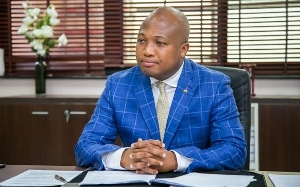Ghana is home to diverse money yielding plants, cash crops and trees which have over the years attracted both local industrialists and global investors to inject capital and to make reasonable returns on their investments.
Rubber plantation is one of such businesses that can thrive in the country given the favourable soil and climate conditions. For rubber experts: “The rubber tree is a bank, every drop is money”.
The Ghana Oil Palm Development Company (GOPDC), which has been active in the country’s commercial cash crop cultivation and production value chain, therefore has plans to diversify its operational strategies to include the large scale commercial cultivation and processing of rubber.
It is currently building a state-of the art rubber processing factory with capacity to process about 15,000 metric tonnes of dry rubber per annum by 2020 during the first phase of its production with an expectation to increase the capacity to 20,000 metric tonnes by 2025.
The total investment envisaged for this landmark project is estimated to cost over US$ 50 million with US$15million being channelled into the establishment of the factory for the remaining US$35 million to be directed towards ensuring sustainable supply of seedlings, planting and appropriate out grower scheme.
The entire rubber cultivation programme of Nucleus and out grower scheme will benefit over 20,000 indigenes within the Kwaebibirem district and its surrounding communities within the next four years . Factory is expected to provide permanent employment to about 650 people in the area, 150 factory staff and 500 agricultural workers.
Mr. Gert Vandersmissen, Managing Director of the GOPDC, in an exclusive interview with the Business and Financial Times, after a tour of the plantation, confirmed that the company’s full entry and participation into the rubber production industry’s downstream sector by 2020 could help harness the country’s considerable potential in the cash crop’s cultivation and increase employment generation for the rural communities as well as provide source of income for the rural dwellers.
This could help to improve the livelihoods of the village communities and help to stimulate both the economic and social development of the rural areas.
As part of the company’s entry strategy, it has commenced its plantation operation with the planting of approximately 1,000 hectares of rubber trees within its existing oil palm plantation. By 2020, the company hopes to plant over 10,000 hectares of rubber trees with 3,000 from its own land and 7,000 trees from out grower farm scheme in the area. There will be about 3,500 farms for the out grower scheme to aid the supply to feed the factory.
It is currently, investing in pilot farms which would involve the selection of farms, pegging, planting among other, this is being done along educating and assuring farmers of the viability of rubber farming as a full time venture.
“We have started with our out grower 50 hectares and next year will increase to 150 hectares. The first phase is pilot farms and after we will train farmers how to tap the trees. That is the most essential part of the job. If you do it wrongly you cannot exploit your trees for the next 30 years. We will train about 3500 farmers to become specialized tappers,” Vandersmissen said.
He explained that the first tapping from the commercial rubber plantation is projected for 2020 and that will be when trees have reached maturity with initial estimated output about 15,000 tonnes per year.
Vandersmissen explained that the global prices of rubber promises of a considerable medium-to-long term benefits as the demand for the commodity continues to record substantial growth trends.
There are strong possibilities for the market according to the Vandersmissen, and “that demand for the commodity is growing as rubber is still important , there is land shortage worldwide and a growing world population means demand is high”.
A case for investing in rubber cultivation
Rubber is one of the most commonly used plant products in virtually every industry. From Tyre industries to aviation, health, education, sports to engineering, rubber is in high demand.
Tyres, Condoms, elastic bands or pencil erasers, boots, raincoats, rubber stamps and waterproof shoes to dishwashers and swimming caps, rubber actually finds its way into tens of thousands of different products.
The rubber latex is useful for a wide range of industries and products. It is used for adhesive, insulating, friction tape, crepe rubber used for footwear and insulating blanket. The rubber is also used in aviation tires, hose, and domestic clothes wringers to printing presses.
Rubber latex is used in the manufacture of articles such as cushions, balls, air hoses and balloons. Its ability to resist water and most fluid chemicals has resulted in its use in diving gear, rainwear and chemical and medicinal tubing. It is also used as a lining for railroad tank cars, storage tanks and processing equipment.
There are so many reasons why farmers must engage in rubber farmer. Among others also include a huge industrial demand expected to keep the price of rubber high for decades.
It provides high income, high cost of synthetic rubber, low maintenance cost, long period of productivity, has a wide range of adaptability, provides regular income; environment sustainability, high value of rubber wood and allows inter cropping of food and cash crops for higher farm income.
Rubber has been commonly used for over two centuries and at a point in time, came entirely from natural sources.
Now, however, rubber products are also made artificially in Petro chemical plants. This is largely due to the inability to produce enough natural rubber to meet all the world's needs. That explains how highly invaluable natural rubber is in human activities.
Rubber latex is extracted from rubber trees. The economic life period of rubber trees in plantations is estimated around 32 years with up to 7 years of immature phase and about 25 years of productive phase.
Tapping of rubber refers to the controlled wounding of a matured rubber tree with the aim of extracting from it the rubber fluid called latex while at the same time making certain that the economic life of the tree is preserved.
Investing in the cultivation of natural rubber accomplishes three main functions in the country's economy, including the provision of raw materials for the country’s agro-based industries, provision of much needed foreign exchange earnings and ranking the country in the global map as a net exporter of rubber. It also offers employment to a sizeable segment of the Ghanaian rural farming population.
The soil requirement of the rubber plant is generally well-drained, weathered soil made up of laterite, lateritic types, and sedimentary types, non-lateritic red, or alluvial soils.
For optimum growth, the climatic conditions of rubber trees are, rainfall of about 200cm uniformly distributed without any noticeable dry season and with at least 100 rainy days per year with temperature range of about 20 to 34 °C, with a monthly mean of 25 to 28 °C.
It also requires high atmospheric humidity of around 80 per cent and bright sunshine, amounting to about 2000 hours per year at the rate of six hours per day throughout the year.
Sadly enough, rubber tapping has become obsolete and relegated to the background due mainly to the lack of investment and the country’s rigid land acquisition system.
The rubber producing countries in Africa only produce four per cent of the total global production, while Thailand, the largest rubber producer in the world produces 27 per cent.
Ivory Coast which is the largest producer of rubber in Africa produces 50 per cent of the total Africa production, while Nigeria produces only 11 per cent with Ghana producing about 19,134 metric tonnes in 2009.
Research has shown that rubber business is more of a smallholder type of business. This is the case in most countries of the world where rubber is planted. it is the smallholders that are more in it than commercial outfits. But the case is different in Ghana as the bulk of production comes from commercial outfits.
As of 2009, approximately 11,855 hectares of land had been cultivated under outgrower schemes financed by the government. The rubber plant has a productive lifespan of 35 years.
The country moved from 12,000 hectares of rubber plantations in 1995 to 35,000 hectares, helping to create employment for some 100,000 people.
Rubber production increased from 9,300 metric tonnes in 2000 to 19,134 metric tonnes in 2009, recording an increase of 74 percent over the period.
About 95 percent of the country’s rubber produce is exported to China, France, Turkey, East Africa and South Korea. Ghana also exports to neighbouring Burkina Faso.
Currently the traditional rubber-growing regions are the Western and Central Regions, but the northern parts are also being explored for their potential to cultivate the crop.
Outlook
Strong global economic growth in recent years, especially in the rapidly developing economies of China and India, has increased demand for rubber significantly.
The global demand for natural rubber has been consistently on the rise, Global consumption of natural and synthetic rubber, pegged at 12.3 and 16.8 million tons, respectively, in 2015, has will increase 3.1 percent and 0.9 percent from 2014. It is projected to reach 15 and 19.4 million tonne by 2020.
China, the United States, Japan, India and Germany are the main rubber consumers, accounting for 56.8 percent of global consumption.
Business News of Thursday, 19 May 2016
Source: B&FT
















